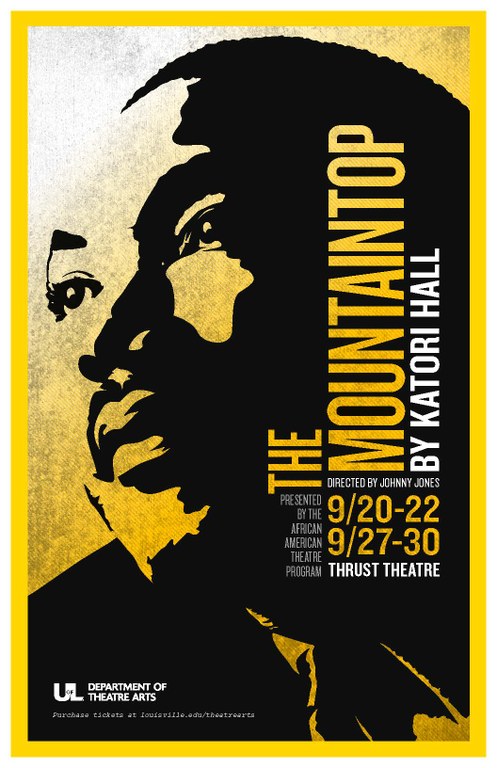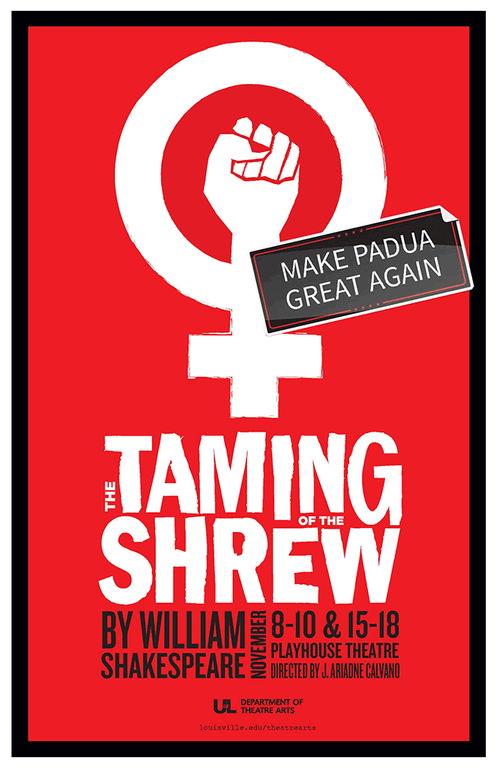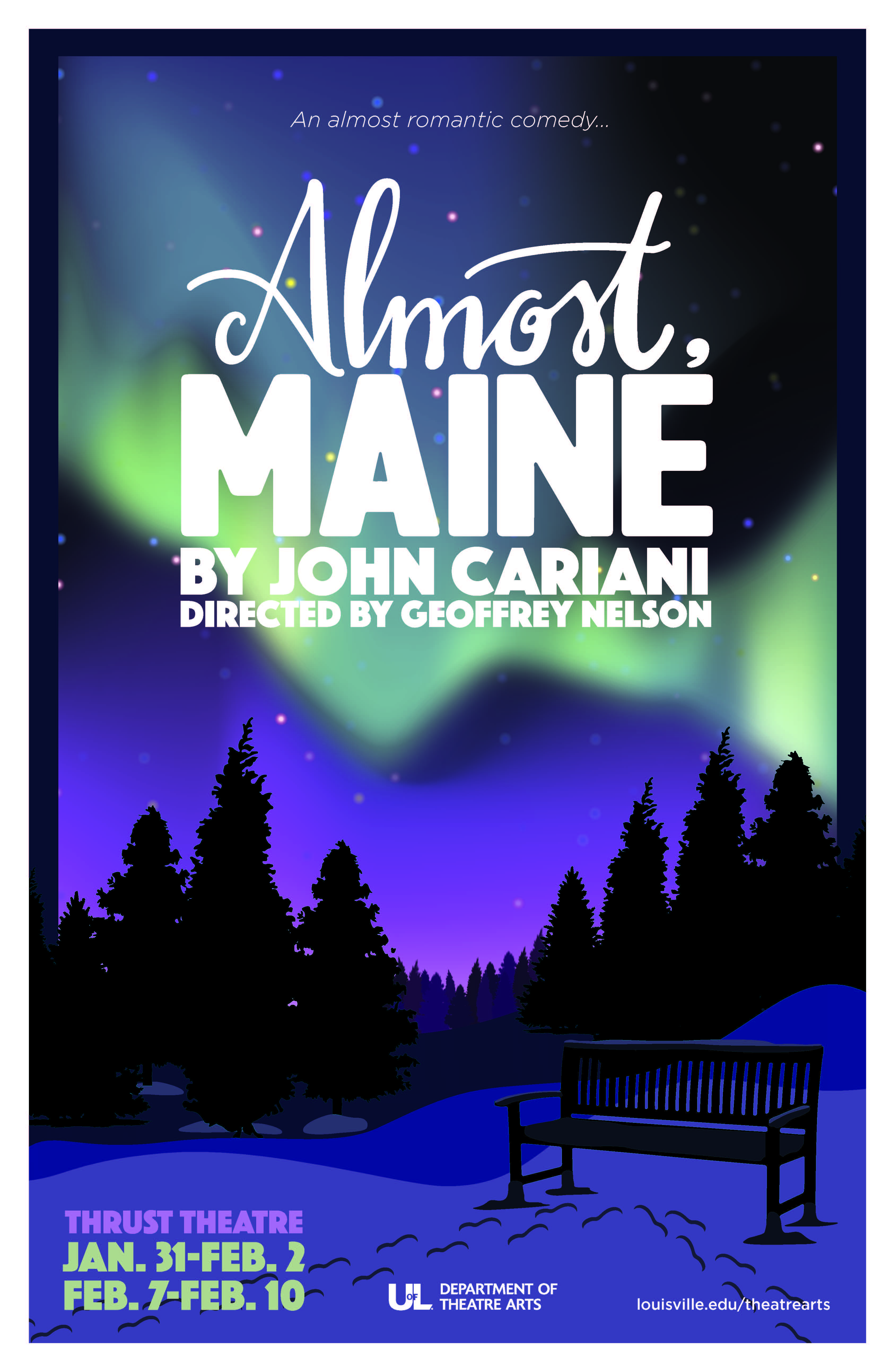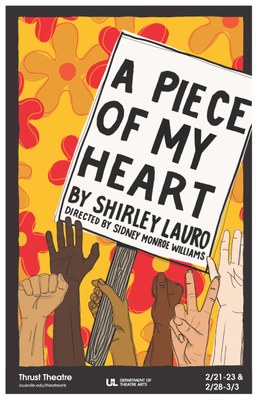Mainstage Season (2018-2019)
Stories of the Past: Lessons for the Future

|
The MountaintopBy Katori Hall The Mountaintop is a fictional retelling of how Martin Luther King Jr. spent his last night on earth, before his tragic assassination. After delivering his famous “I’ve been to the mountaintop speech” on behalf of the sanitation workers in Memphis, Martin goes to the Lorraine Motel to rest before another long day of campaigning. His world is spun on his axis when he meets Camae, a beautiful maid, who delivers his room service. At first, they only exchange flirtatious remarks, but soon they start a deep dialogue about Martin’s hopes and fears, and the two develop a true understanding. When Camae reveals that she is an angel that has come to prepare him for the soon-to-be-coming afterlife, Martin must confront his fears and face his own mortality. The Mountaintop shows the audience a different side of Martin Luther King: a man who is tired, flawed, yet -- despite everything -- is an inspiration.
|

|
The Taming of the ShrewBy William Shakespeare Considered Shakespeare’s first comedy, The Taming of the Shrew revolves around two sisters - one avoiding marriage (Katherine), and one longing for it (Bianca) - and the lengths to which suitors will go to win their “prize.” Our production is set in 1963, the year in which Betty Friedan’s The Feminine Mystique was published. Friedan’s landmark critique of gender roles in American culture sparked what became known as second-wave feminism. When encountering Shakespeare’s Taming of the Shrew today, Katherine seems less “shrewish” than feminist. When she utters her first line about not wanting to be “sold” to a man, one of her sister’s suitors, Hortensio, retorts that “unless [Kate] were of gentler, milder mold,” she will not gain a husband. Setting the Elizabethan play in 1963 America allows us to question how the gendered behavior celebrated in mainstream American culture and society that was critiqued by Friedan 55 years ago relates to gender roles in 2018. |

|
Almost, MaineBy John Cariani Welcome to Almost, Maine, a place that’s so far north, it’s almost not in the United States. It’s almost in Canada. And it’s not quite a town, because its residents never got around to getting organized. So it almost doesn’t exist. One cold, clear, winter night, as the northern lights hover in the star-filled sky above, the residents of Almost, Maine, find themselves falling in and out of love in unexpected and hilarious ways. Knees are bruised. Hearts are broken. But the bruises heal, and the hearts mend—almost—in this delightful midwinter night’s dream.
“ALMOST, MAINE is a series of nine amiably absurdist vignettes about love, with a touch of good-natured magic realism…witty, romantic, unsentimental. A beautifully structured play, with nifty surprise endings (most but not all of them happy).” —NY Times. “Sweet, poignant, and witty. Nearly perfect. ALMOST, MAINE’s charm is real. [It] packs wit, earns its laughs and, like love, surprises you.” —NY Daily News. “Mega-hit ALMOST, MAINE lands somewhere between Norman Rockwell and Our Town. Unabashedly unhip. There is no pretense of an edge here—the show offers a sweetness and decency that’s become rare at the theater. At this point, it’s a welcome breath of fresh air.” —New York Post. |

|
A Piece of My HeartBy Shirley Lauro This is a powerful, true drama of six women who went to Viet Nam five nurses and a country western singer booked by an unscrupulous agent to entertain the troops. The play portrays each young woman before, during, and after her tour in the war torn jungle and ends as each leaves a personal token at The Wall in Washington. The two-act play follows six women (four nurses, a Red Cross volunteer, and an intelligence officer) before, during, and after the war. Said jumble of characters includes Sissy, a rather naive but sweet girl from Pennsylvania; Whitney, a seemingly prim and proper Vassar graduate with a secret; Martha, an army brat who discovers Vietnam might be more than she bargained for; Steele, an African-American woman who despite being the most capable of the lot seems to always get treated as the Cassandra; Maryjo, a country-rock singer and professional ditz who goes over to entertain the troops; and Leeann, the half-[[Chinese]], half-Italian who just wanted to go to Hawaii, but instead gets routinely mistaken for Vietnamese. |
|
|
A Raisin in the SunBy Lorraine Hansberry A Raisin in the Sun is a play about dreams; what it means to dream big, to lose faith in your dreams, and to discover new dreams. It is also a story about family. We meet the Younger family the day before they are getting a $10,000 insurance check from the death of the father, Walter Younger. We watch as different members of the family have different ideas of how to use the money: Mama wants to buy a house with a little garden in the back, Walter Lee Younger (their son) wants to invest in a liquor store, Ruth (Walter Lee’s wife) wants a house with some space and a nice kitchen, and Beneatha (Walter Lee’s sister) wants to go to medical school. Tensions increase as each member of the family tries to get their own way, eventually threatening to break apart their foundation completely. The stakes continue to climb as questions about identity, class, value, race and love become forefront issues, and outsiders to the family make it impossible to forget the world that the Younger family cannot seem to escape. |

